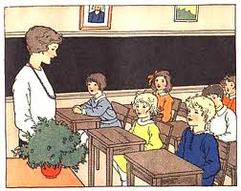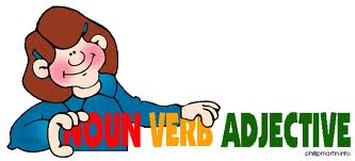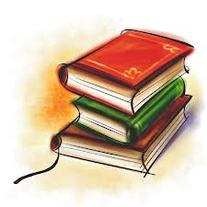LANGUAGE ARTS
HELPFUL WEBSITES
http://www.spellingcity.com/MrsBrooks1/ is a language arts website where your child can now complete their weekly language arts homework by playing learning games instead of completing the weekly spelling packet. It's an awesome site, please check it out ASAP so your child can get busy learning while having fun playing games.
http://www.aaaspell.com is a practice site for spelling, vocabulary, math, and other subjects. It is free to everyone.
http://www.kidsspell.com is a free website that helps to teach spelling.
http://www.wegivebooks.org/ is a wonderful free website that has a selection of over 200 books that you can read on the computer with your child. For every book that you read online, one book will be donated to kids that need books to read.
http://www.spellingcity.com/MrsBrooks1/ is a language arts website where your child can now complete their weekly language arts homework by playing learning games instead of completing the weekly spelling packet. It's an awesome site, please check it out ASAP so your child can get busy learning while having fun playing games.
http://www.aaaspell.com is a practice site for spelling, vocabulary, math, and other subjects. It is free to everyone.
http://www.kidsspell.com is a free website that helps to teach spelling.
http://www.wegivebooks.org/ is a wonderful free website that has a selection of over 200 books that you can read on the computer with your child. For every book that you read online, one book will be donated to kids that need books to read.
There is a fantastic website that I hooked our class up with for our language arts homework called Vocabulary/SpellingCity.com. The website address for our class is www.spellingcity.com/MrsBrooks1/, be sure to go check it out. This site is also extremely valuable for use in the classroom for whole group learning on the big screen.
Phonics Helps
Phonemic Awareness is . . . “understanding that a word is made up of a series of discrete sounds. Without this insight, phonics instruction will not make sense to children.”
Phonemic Awareness . . . “National Reading Panel found over 50 scientifically credible studies documenting the importance of phoneme awareness for learning to read AND the importance of phoneme awareness instruction for preventing and treating reading difficulties.”
The first 3 steps in the developmental sequence for Phonological Awareness are:
1. Word Segmentation . . . How many words are there in the sentence - “I love to read.”?
2. Rhyme – Recognition . . . “Does train rhyme with crane?”
3. Rhyme – Production . . . “What is a word that rhymes with far?”
Developmental Sequence – Phonological Awareness
A. Word Segmentation (How many words are there in the sentence I love to read?)
B. Rhyme – Recognition (Does train rhyme with crane?)
C. Rhyme – Production (What is a word that rhymes with far?)
D. Syllable Blending (Put together rain and bow; what word is it? rainbow)
E. Syllable Segmentation (Break apart the syllables in baseball)
F. Syllable Deletion (Say pancake without the pan.)
G. Onset and Rime/Blending (Tell me the word I am trying to say: /f/.. .irm. firm)
H. Phoneme – Matching/Isolating Initial (What sound do you hear at the beginning of pad?)
I. Phoneme – Matching/Isolating Final (What is the last sound you hear in can?)
J. Phoneme – Matching/Isolating Medial (What sound do you hear in the middle of dog?)
K. Phoneme – Blending (Put these sounds together and tell me the word: /s/ /t/ /e/ /m/.)
L. Phoneme – Segmentation (Take apart all the sounds in the word cat.)
M. Phoneme – Manipulation (Change the /k/ in kite to a /b/. What word do you get?
Parents: This may give you ideas of things you can work on at home!
Phonemic Awareness is . . . “understanding that a word is made up of a series of discrete sounds. Without this insight, phonics instruction will not make sense to children.”
Phonemic Awareness . . . “National Reading Panel found over 50 scientifically credible studies documenting the importance of phoneme awareness for learning to read AND the importance of phoneme awareness instruction for preventing and treating reading difficulties.”
The first 3 steps in the developmental sequence for Phonological Awareness are:
1. Word Segmentation . . . How many words are there in the sentence - “I love to read.”?
2. Rhyme – Recognition . . . “Does train rhyme with crane?”
3. Rhyme – Production . . . “What is a word that rhymes with far?”
Developmental Sequence – Phonological Awareness
A. Word Segmentation (How many words are there in the sentence I love to read?)
B. Rhyme – Recognition (Does train rhyme with crane?)
C. Rhyme – Production (What is a word that rhymes with far?)
D. Syllable Blending (Put together rain and bow; what word is it? rainbow)
E. Syllable Segmentation (Break apart the syllables in baseball)
F. Syllable Deletion (Say pancake without the pan.)
G. Onset and Rime/Blending (Tell me the word I am trying to say: /f/.. .irm. firm)
H. Phoneme – Matching/Isolating Initial (What sound do you hear at the beginning of pad?)
I. Phoneme – Matching/Isolating Final (What is the last sound you hear in can?)
J. Phoneme – Matching/Isolating Medial (What sound do you hear in the middle of dog?)
K. Phoneme – Blending (Put these sounds together and tell me the word: /s/ /t/ /e/ /m/.)
L. Phoneme – Segmentation (Take apart all the sounds in the word cat.)
M. Phoneme – Manipulation (Change the /k/ in kite to a /b/. What word do you get?
Parents: This may give you ideas of things you can work on at home!



